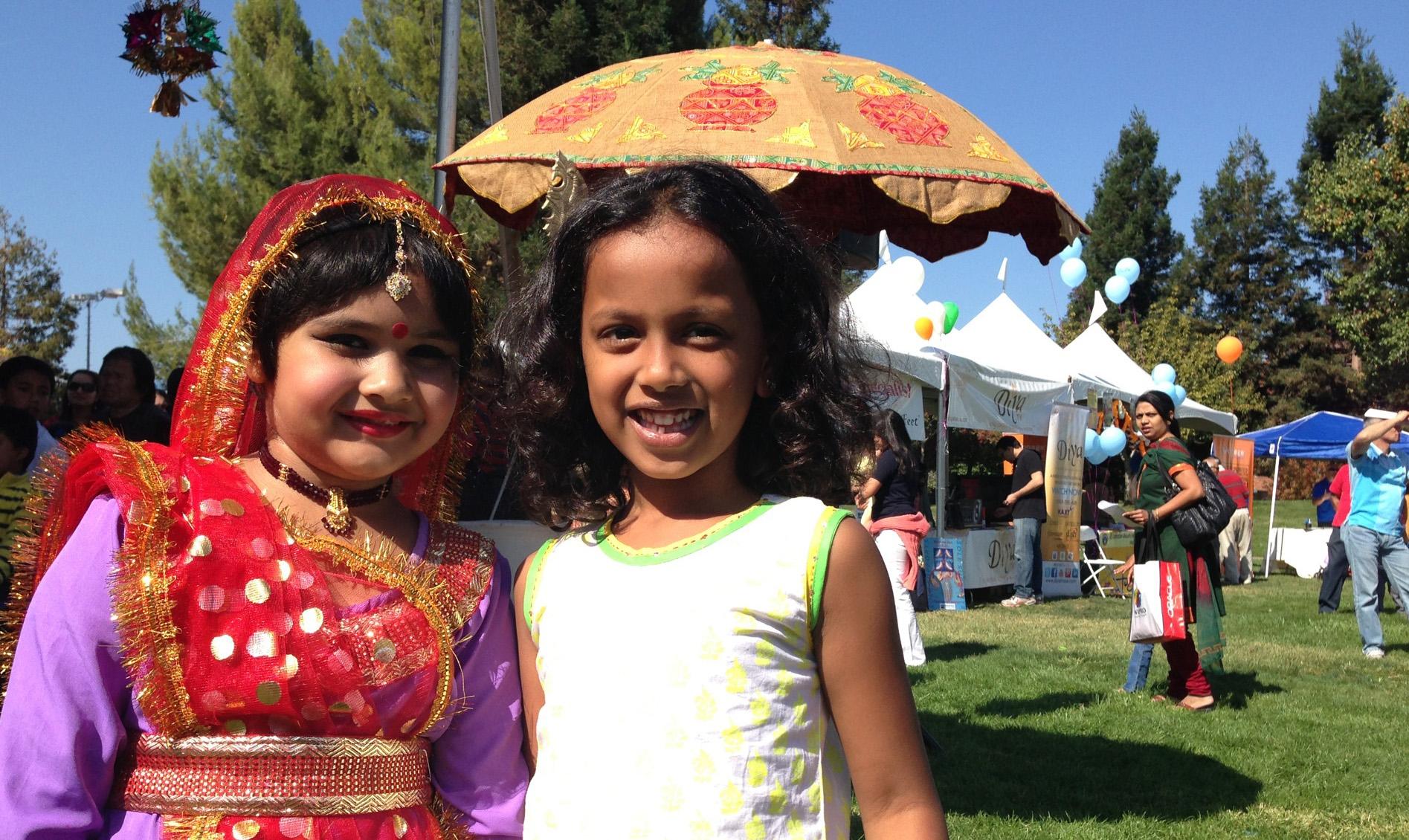Silicon Valley gets linguistic enlightenment from India
Dancers relax after performing during a Diwali Festival in Silicon Valley.
Diwali, the Hindu festival of lights, will be celebrated around the world on November 3. In Silicon Valley, where Indian engineers make up one third of the tech workforce and have founded many successful startups, Diwali is an integral part of the culture and celebrations start early.
I went to a Diwali Festival in October in Cupertino. Silicon Valley's Indian community was out in force.
On the main stage, Indian boys and girls danced; around them, vendors sold vibrant clothes and crafts. The smell of aloo gobi, chicken tikka and naan filled the air. Most women wore dazzling saris. Some elderly men wore embroidered kurtas, or tunics. But most wore the classic garb of Silicon Valley: jeans and T-shirts.
I chatted with Jasho Patnaik, a software engineer from Odisha state, in Eastern India. He said Diwali is much more than a festival of lights.
“It’s a festival of spreading love. Love is not specific to India, not to America, not to British, not to anybody."
Patnaik added: "Love is love, light is light.”
For Patnaik, Diwali and other Indian traditions like meditation inform his view of technology. Take the word avatar, a Hindu concept popularized by the blockbuster movie. It pops up all over the place: in computer sciences, artificial intelligence and even robotics.
“Avatar is actually a Sanskrit Hindi word, it’s a spirit taking a new form for something,” said Padmasree Warrior, chief technology and strategy officer at Cisco Systems in San Jose. “Every time I see that word, it instills a sense of pride.”
This spiritual influence from India has become embedded in Silicon Valley culture. Of course words like guru and mantra have been around in America for decades but in tech boardrooms and coffee shops, expressions like coding guru and fail-fast mantra are now part of the Silicon Valley vernacular.
Junglee is a Hindi word meaning wild or ill-mannered. It was used by a Silicon Valley startup (founded, of course, by a team of Indians) that was acquired by Amazon.
Then there are the cultural differences. In Indian culture it’s hard to say "no." Instead, according to Raj Oberoi, CEO of software startup Talygen, Indians obfuscate, often using what he calls the "bobblehead" gesture.
"A bobblehead is a unique Indian artform,” said Oberoi. “Indians have the unique ability to move their heads from left to right and it looks just like a bobblehead…on your car dashboard.”
I asked him if it always means no.
“No, it can also mean a yes. Which is what’s so confusing,” he chuckled. “Is that a yes, is that a no, is that a maybe, or are you having neck issues?"
During India’s colonial days, the English language absorbed many words from Hindi: words such as jungle, juggernaut and pundit. These words have migrated from India to Britain to America, but some well-educated Indians in Silicon Valley still talk in a stilted English of centuries past. Raj Oberoi shares some examples: Phrases like ‘do the needful’ or ‘I beg to stay.’
This old-fashioned talk sometimes leaves American colleagues in the IT world scratching their heads and seeking explanations.
Oberoi explains that it’s a rediscovery for Americans of a language that, even in Britain, is basically dying out. It’s more archaic, very formal, very flowery and it harkens back to the days of the Raj.
Cisco’s Padmasree Warrior shares an example of Hinglish, a Hindi-English mingling that adds Hindi suffixes to English words.
“Hey did you go to the Gym–shim yesterday?” Warrior said. “That means did you go work out?” Some, like me, consider Hinglish delightful. Others worry that people who use it too much will never properly master Hindi–or English.
Growing up in India, Warrior described how she was taught to conform. In Silicon Valley, her words and the way she thinks have changed.
“Close your eyes and say what words come to your mind…risk taking, entrepreneurship, out of the box…” she said. “In the [Silicon] Valley, we want talent that breaks the rules, creates disruptive innovation. These words have been added uniquely to my vocabulary.”
Silicon Valley's Diwali Festival is a home from home for many Indians. It made Jasho Patnaik think about Indian concepts and how they may relate to his adopted home. Enlightened thought, he said, is the key to both computer programming and changing the world.
“It’s the way you think. That’s where it starts, ” he said.
It’s true: Enlightenment is coming from multicultural, multilingual India. But an American version of enlightenment is also rubbing off on the Indians who now populate multicultural, multilingual Silicon Valley.
